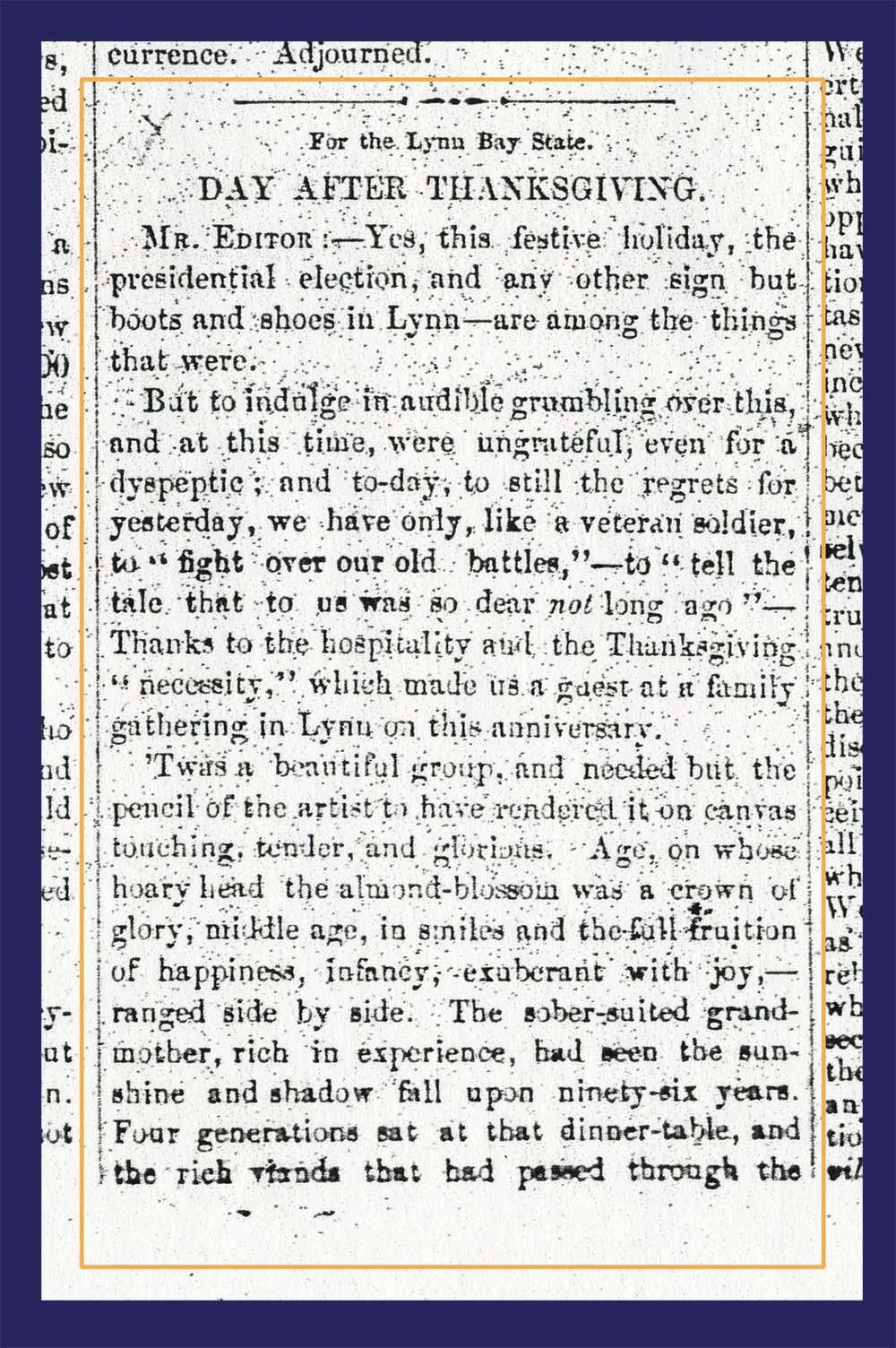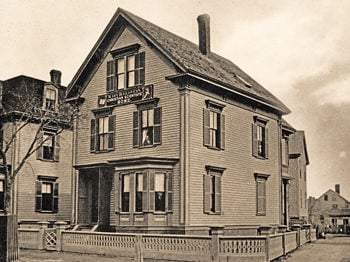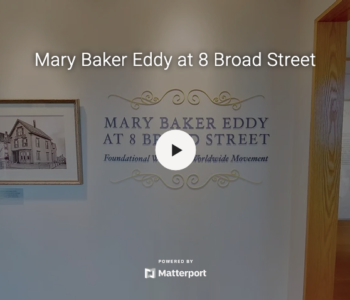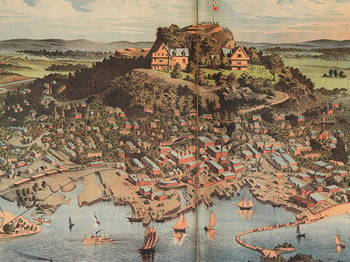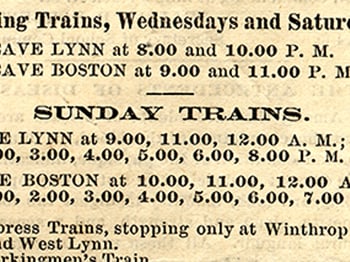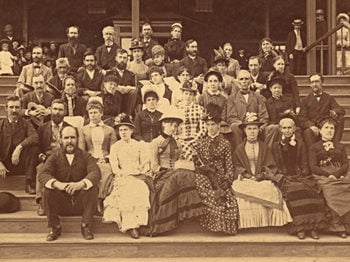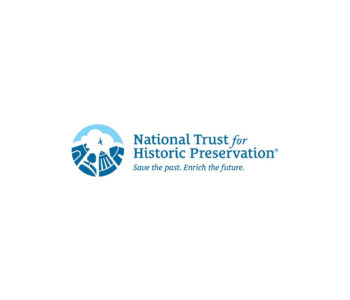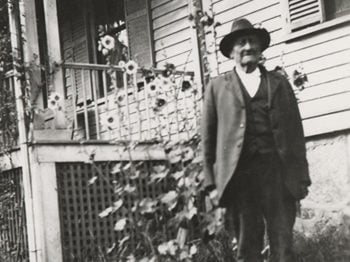The upcoming Thanksgiving holiday provides a timely opportunity to revisit one of Mary Baker Eddy’s early published writings, which provides a generous helping of food for thought regarding this day of gratitude. On December 1, 1864, her article “Day After Thanksgiving” appeared in the Lynn Bay State, a local weekly publication in the area of Lynn, Massachusetts.1
The article describes a family Thanksgiving celebration that Mrs. Eddy had recently attended. The experience must have resonated enough with her to move her to write the short reflective piece and submit it for publication in the local paper. She published it under her initials “M. M. P.,” or Mary Morse Patterson. At the time, she was living in Lynn with her second husband, Daniel Patterson. Their marriage was strained and her health still fluctuating — undoubtedly a tenuous time for her, although not without its bright moments.
During her lifetime, she would revise and republish this article two more times under the new title “Thanksgiving Dinner.” The first was nearly two decades later in the December 1883 issue of The Christian Science Journal, and the final version was published in 1897 in Miscellaneous Writings 1883-1896.2 While these two later versions introduced important changes, they still preserved much of the original 1864 version. Significantly, this makes “Thanksgiving Dinner” the only article in Miscellaneous Writings first published before Mrs. Eddy’s 1866 discovery of Christian Science.3 Its content, therefore, provides a unique glimpse into Mrs. Eddy’s experience just two years prior to her significant healing in 1866.
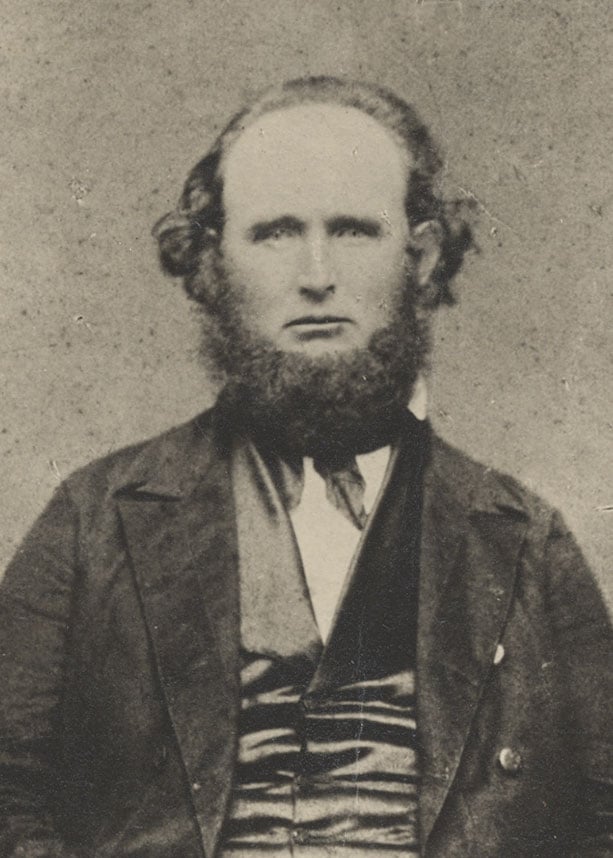
In all three versions, the article largely focuses on the joyous experience she shared with a family that Thanksgiving, but importantly has a concluding lament for the fact that many people are missing loved ones on this holiday. The 1864 version makes it clear that Mrs. Eddy was a dinner guest of a family this particular year, which seems to indicate that if not for the welcomed invitation, she very likely may have been alone on that holiday.
It was written in the latter part of the Civil War when families all across the United States were grieving after losing loved ones or praying for the safe return home of their husbands, fathers, and brothers serving in the Confederate or Union armies. Mrs. Eddy herself was affected by the war through the involvement of both her husband Daniel, and her son, George Glover II. George, who was taken away from her in 1856 to what was then the West but had reconnected with her in 1861, joined the Union Army when just a youth of seventeen. He was injured in Mississippi at the Second Battle of Corinth in October 1862, but continued to serve through the end of the war.4 Daniel was captured and imprisoned by the Confederacy for several months before he escaped in September 1862.5 After his return home (a journey of some 400 miles),6 their marriage began to deteriorate. Patterson failed to adequately provide for his wife’s welfare, and was often away from her for long periods of time.7 In fact, in a letter she wrote to a friend on April 24, 1864, Mrs. Eddy stated, “I am a little bit lonesome, doing, and suffering! Am wishing I was round the home-hearth with child and husband amid the joys of liberty.”8
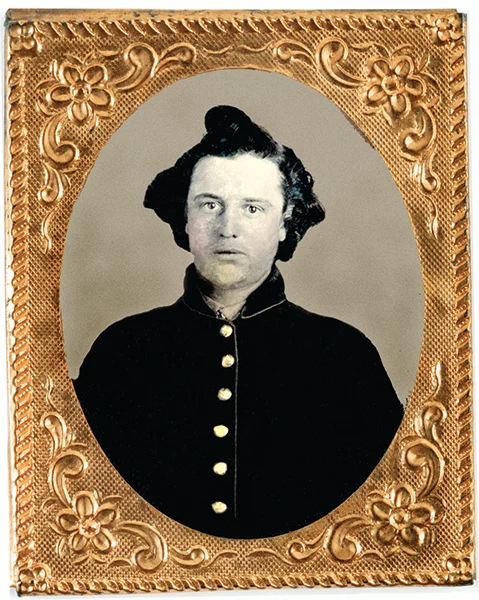
What is perhaps most central to this article is that it portrays Mary Baker Eddy’s love of home. This can be seen in her descriptions of the joyous festivities of celebrating this holiday with a family of many generations, from the baby to the grandmother. Some years later she made the comment to members of her household, “The strongest tie I’ve ever had, apart from love of God, has been my love of home.”9 Although her own home life in 1864 was far from ideal, her heartfelt appreciation for such is evident in “Day After Thanksgiving.” The article, therefore, is really a timeless exultation of love, which is found in the simplest of expressions. Fittingly, the last version closes with the added reminder to recognize those in need of such love, then look forward to “peace, and plenty, and happy households.”10
Below, please enjoy a transcription of “Day After Thanksgiving”.
